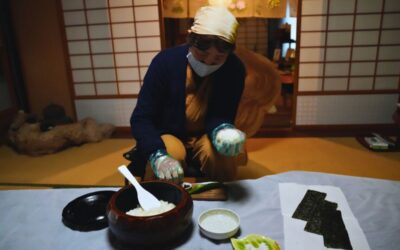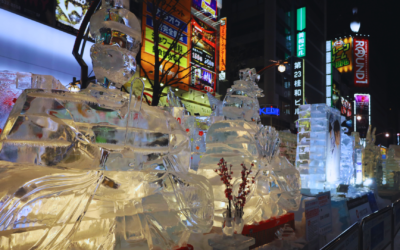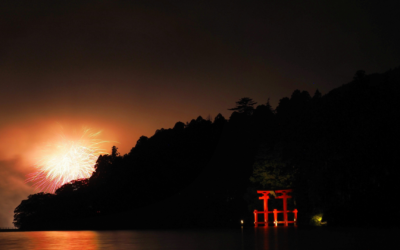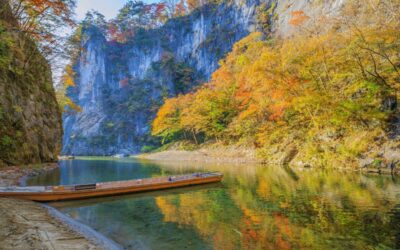As a foreigner living in Japan, I’ve been captivated by many places here, but none have resonated with me quite like Asakusa. This neighbourhood, which has both resisted and embraced modernity, stands as a testament to Tokyo’s layered identity—with the past enriching the present.
What draws me to Asakusa is not just its iconic landmarks but the daily life and energy. Every nook and cranny has a story to tell, a taste of history, or a sip of tradition. From the peaceful Sensō-ji Temple to the crazy-busy Nakamise Street, Asakusa feels like a living museum that’s totally alive.
If you’re looking for something different, Asakusa is your spot. It’s like a movie set, with rickshaws zipping around and the Tokyo Skytree towering over everything. This guide will show you how to explore Asakusa like a local, not just a tourist.
Morning: Start with a Spiritual Visit
Sensō-ji Temple
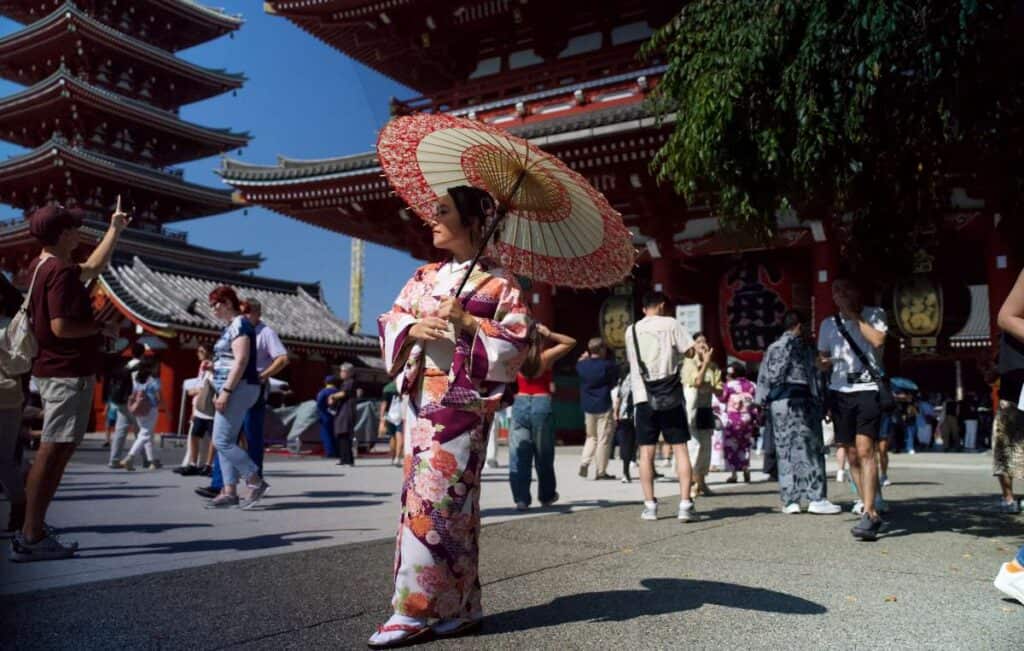
Begin your Asakusa adventure at Tokyo’s oldest and most significant temple, Sensō-ji. Easily accessible from Asakusa Station, it’s just a five-minute walk from the station’s Thunder Gate (Kaminarimon) exit. Visiting early in the morning is advisable as it allows you to experience the temple’s peaceful atmosphere before the crowds arrive.
Sensō-ji, dedicated to the bodhisattva Kannon, dates back to 628 AD, making it a pivotal site in Tokyo’s cultural and spiritual landscape. The temple’s architecture, vibrant with red and gold accents, is stunning in the early morning light. The surrounding gardens and pagoda add to the peaceful ambiance, providing a serene start to your day.
Take your time exploring the main hall and the five-story pagoda. Lighting incense at the large cauldron in front of the main hall is said to bring health and healing by wafting the smoke towards oneself.
Don’t miss the Omikuji stalls where for around ¥100, you can draw a fortune and tie it onto the temple racks if it’s unfavourable. The temple is open from dawn till late evening, usually from 6 AM to 5 PM, allowing for flexible visiting hours.
After exploring, enjoy some matcha ice cream or azuki bean paste sweets from the stalls lining Nakamise Street leading up to the temple.
Mid-Morning: Cultural Immersion
Nakamise Shopping Street
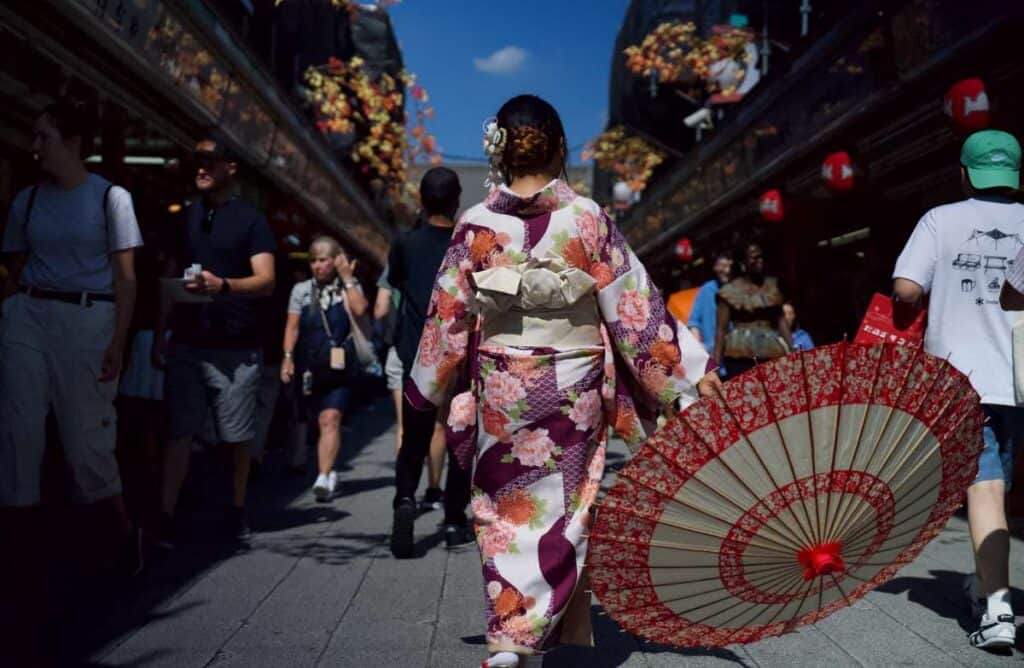
Right after you walk out of Sensō-ji Temple, you’ll find yourself on Nakamise Street. This street is like a busy little market that leads all the way from the big Thunder Gate at one end to another gate called Hozomon near the temple. Nakamise Street is really old and famous in Tokyo because it’s been around for hundreds of years, helping visitors find cool things to buy as they walk to and from the temple.
Nakamise Street is like a treasure chest, filled with over ninety shops on a path that’s not even as long as three football fields. As you stroll down the street, you’ll see lots of shops selling fun Japanese clothes like yukatas, beautiful folding fans, and lots of different crafts. They also sell yummy Japanese snacks like ningyo-yaki, which are sweet cakes filled with red bean paste, shaped like little dolls.
Shopping here is a lot of fun because you can see and smell all sorts of tasty treats being made right in front of the shops. You can try different snacks like mochi and rice crackers, and most of them don’t cost a lot—usually between ¥100 to ¥500. It’s easy to get a bunch of cool souvenirs without spending too much money.
Nakamise Street is also a great place to take pictures. With all the bright red lanterns hanging up, traditional looking shops, and the crowd of people, it looks very lively and colorful. It’s a place that shows what Tokyo was like a long time ago but is still fun and busy today.
Late Morning to Lunch: A Stroll through Time
Hoppy Street
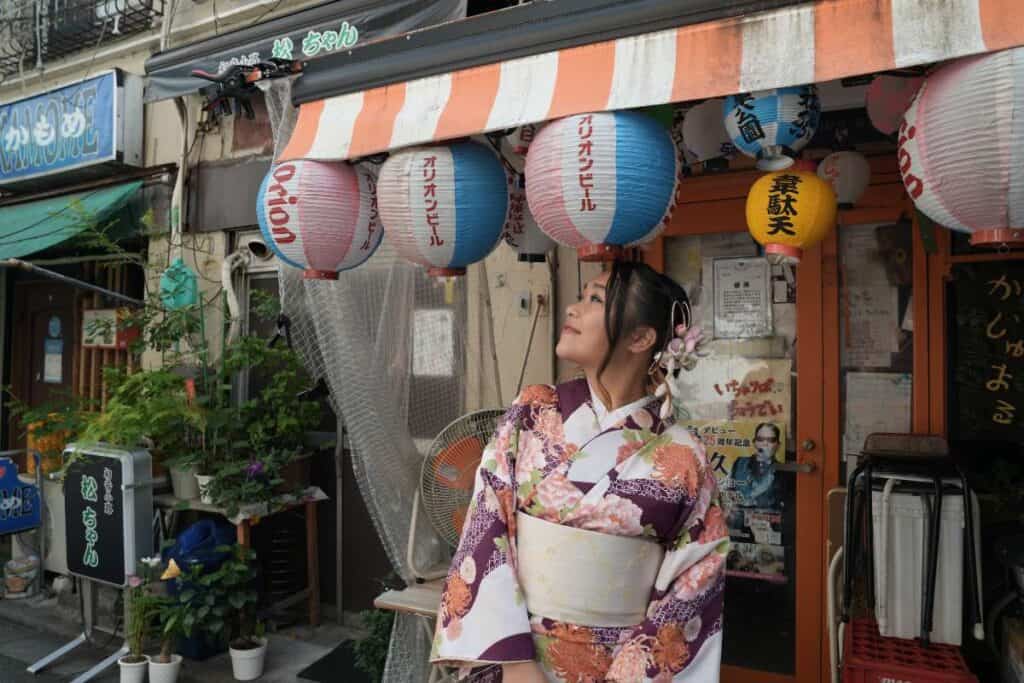
After you’ve had your fill of exploring and shopping on Nakamise Street, with its vibrant array of traditional snacks and unique souvenirs, continue your Asakusa adventure by heading over to Hoppy Street. It’s just a short walk away from the end of Nakamise Street.
This street is famous for its retro Showa era ambiance and is lined with izakayas (Japanese pubs) where you can indulge in local flavors and of course, Hoppy, which is enjoyed mixed with shochu. The vibrant atmosphere here captures a different facet of Asakusa, one that’s less about solemn traditions and more about the joyous celebrations of everyday life.
Hoppy Street offers a wonderful opportunity to engage with locals and enjoy dishes like yakitori (grilled chicken skewers) and other classic izakaya fare. Prices are quite reasonable, with small dishes often starting around ¥300-¥500. The street also provides a unique photographic opportunity with its quaint, Showa-era decor providing a backdrop that feels distinctly different from the more tourist-heavy areas of Asakusa.
Early Afternoon: Unique Travel Experience
Rickshaw Ride Around Asakusa
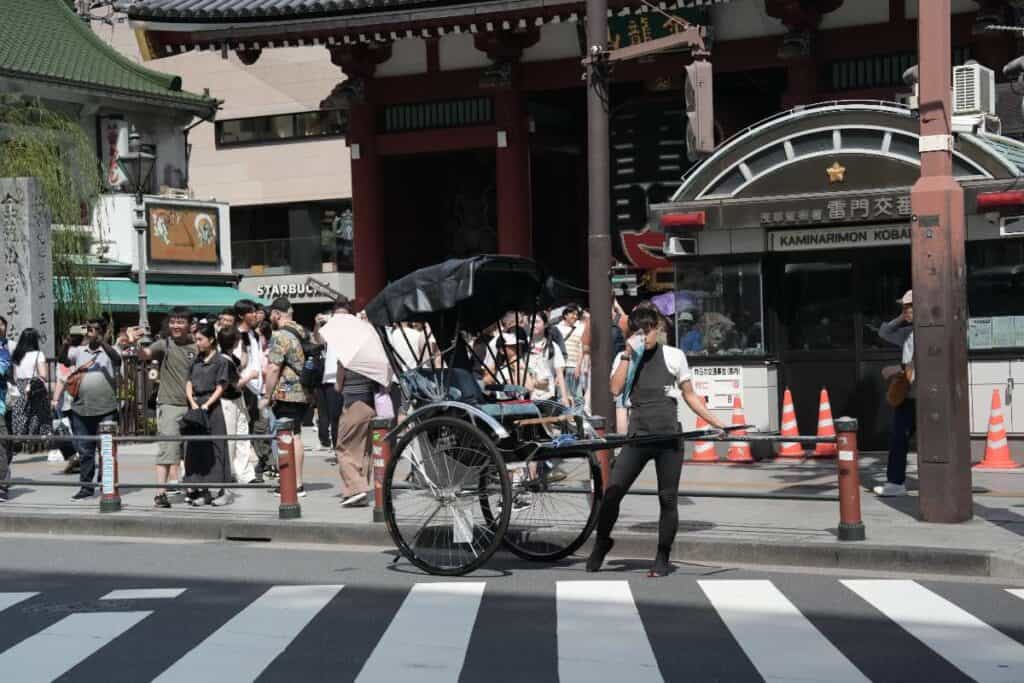
Just outside the Asakusa Culture Tourist Information Center, you’ll find rickshaw drivers ready to take you on a tour. These traditional Japanese rickshaws provide a unique way to see Asakusa, combining history with the charm of a bygone era. Opting for a rickshaw ride offers a personal and intimate tour of the neighbourhood.
Rickshaw tours can be customised but typically highlight Asakusa’s hidden alleys, historic landmarks, and offer plenty of photo opportunities. The drivers often double as knowledgeable guides, providing insights into the history and culture of the area.
Most rickshaw services offer different durations ranging from short 10-minute jaunts to more extensive 30-minute explorations. Prices start at around ¥2000 for the shortest ride, which can accommodate two adults. Longer excursions offer more in-depth experiences and can cost up to ¥9000 but are well worth the investment for those interested in learning more about Asakusa’s rich history.
It’s advisable to book your rickshaw ride in advance, especially during peak tourist seasons. You can either book online or directly at the stand outside the tourist center. Remember to check the weather forecast as rickshaw rides are best enjoyed on clear, dry days. Don’t want to go through the hassle of booking so many things for your trip? Leave it to us. Our travel planner services are designed to create a personalised and hassle-free itinerary for your trip to Japan. 🇯🇵
Sumida River Walk

After your rickshaw tour, head towards the nearby Sumida River for a leisurely walk. The river is just a short stroll away from the bustling tourist areas, offering a peaceful escape with stunning views of the water and the Tokyo Skytree in the distance. This walk is perfect for those looking to relax after the morning’s activities.
The Sumida River is lined with beautiful promenades that provide ideal paths for walking or cycling. The expansive views of the Tokyo skyline coupled with the calm waters create a refreshing atmosphere. The area is also well-known for its cherry blossoms in the spring, making it a popular spot for hanami (flower viewing) if you visit during cherry blossom season.
Along the river, you can watch boats cruising by or sit and enjoy the relaxing scenery. The riverbanks are perfect for a picnic with items purchased from local konbinis (convenience stores) or nearby market stalls, where you can grab onigiri (rice balls) or bento boxes for around ¥500. The Taito Riverside Sports Center, which rents out bikes for around ¥300 per hour, offers another fun way to explore the area.
The Sumida River area is accessible throughout the day and into the evening. It’s particularly beautiful at sunset when the Tokyo Skytree and Asahi Beer Hall (with its distinctive golden structure) are bathed in golden light. Public toilets and seating areas along the walk make it comfortable for visitors of all ages.
Late Afternoon: Dive into the Artisan World
Kappabashi Kitchenware Street
From the Sumida River, Kappabashi Street is a 15-minute walk inland. This street, famously known as Kitchen Town, is a paradise for anyone interested in cooking or food culture. It’s a unique shopping experience that offers a look at a lesser-known side of Tokyo’s culinary scene.
Kappabashi Street runs between Ueno and Asakusa, and is lined with stores selling everything from professional-grade kitchen knives and restaurant supplies to handmade ceramics and plastic food replicas. Walking this street provides a tactile connection to Japan’s world-renowned culinary arts.
Here, you can find beautifully crafted Japanese knives, which make excellent souvenirs or gifts, typically starting at around ¥5000 for a basic model. Don’t miss the plastic food model shops, where you can buy incredibly realistic food replicas—great for quirky gifts or decorations, with small items starting around ¥1000. Additionally, several shops offer workshops where you can try your hand at making your own plastic food models or painting ceramics.
Kappabashi Street shops are generally open from 9 AM to 5 PM. It’s worth noting that some shops close on Sundays, so check opening days ahead of your visit to avoid disappointment. The street also hosts various events and festivals throughout the year, particularly around Japanese holidays, which are fun and enriching cultural experiences.
Evening: A Culinary Conclusion
Dinner at Asakusa’s Traditional Eateries

After appreciating the artisanal wonders of Kappabashi, take a leisurely walk back towards the heart of Asakusa for dinner. The area around Sensō-ji and Nakamise Street transforms as the sun sets, with the lanterns and neon lights beginning to glow, offering a picturesque evening atmosphere that enhances the dining experience.
Asakusa is known for its traditional Japanese eateries that range from street food stalls to established restaurants offering Edo-style dishes. This is the perfect opportunity to try authentic tempura, soba, and unagi, which are all specialties of the region. Each restaurant in Asakusa tells a story through its dishes, many of which have been perfected over generations.
For an affordable yet unforgettable meal, consider visiting one of the local izakayas where you can enjoy a variety of small dishes accompanied by Japanese sake or beer. Prices are typically around ¥2,000 to ¥3,000 per person. For something uniquely Asakusan, head to a monjayaki (Japanese-style savory pancake) restaurant, where you can cook the dish right at your table. This interactive dining experience not only fills you up but also provides entertainment.
Many restaurants in Asakusa are open until late, usually around 11 PM or midnight, making it convenient to end your day without rushing. It’s advisable to check if an English menu is available if needed, and look out for places with the ‘English menu available’ sign or ask the staff directly, as most are accommodating to tourists.
Night: Stroll and Souvenirs
Senso-ji Night Walk and Nakamise Street Shopping

After dinner, a return visit to Sensō-ji offers a completely different experience compared to the daytime. The crowds thin out, and the lighting of the temple and its surroundings create a serene and almost mystical atmosphere. This is an ideal time for reflection and to take in the architectural beauty without the bustle.
As the night winds down, Nakamise Street, while some shops may start closing, still has plenty of options for last-minute souvenir shopping. This is a good chance to pick up traditional crafts, like handmade fans, Japanese calligraphy tools, or intricate fabric goods. Prices vary, but many items are reasonably priced and bargaining is not usually customary.
While exploring, keep an eye out for seasonal events or night markets that occasionally take place in Asakusa, especially near the temple grounds. These markets often feature local artisans and vendors selling unique, handmade items that can serve as special mementos of your visit.
The temple itself is always open, though the shops typically operate until around 7 PM. However, during festival times or special events, these hours may extend later into the evening.
Explore Asakusa And Tokyo’s Must-Sees With Us!
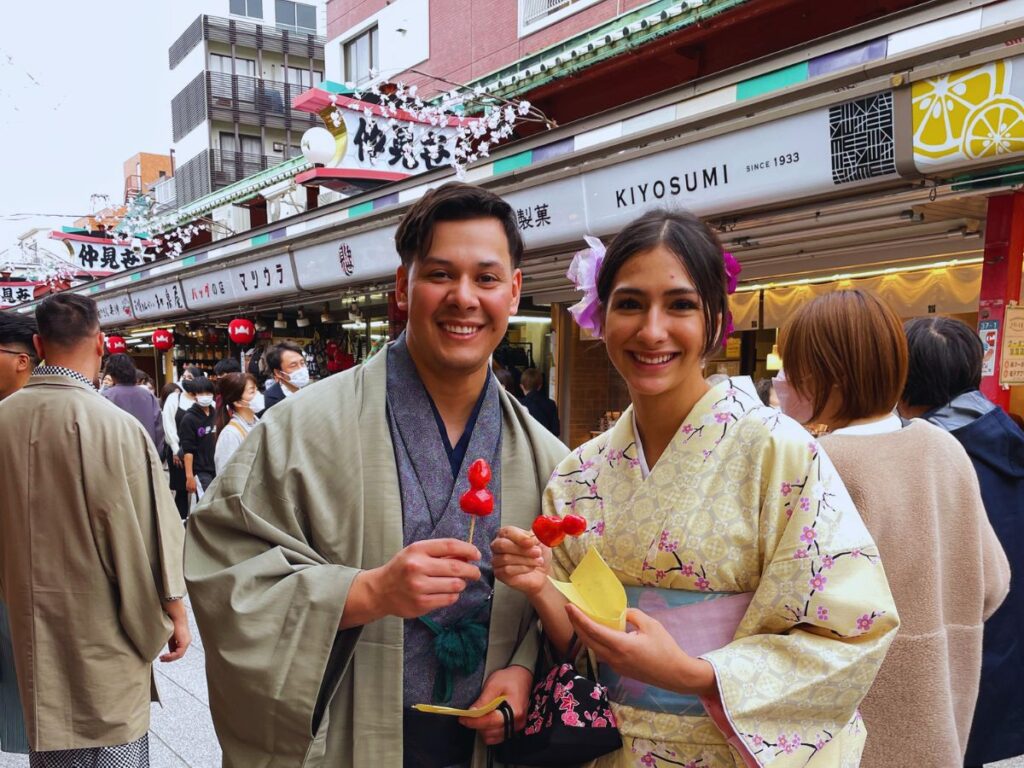
Asakusa is more than a single destination—it’s a gateway to understanding Tokyo itself. And with our Ultimate One-Day Tokyo Must-Sees Tour, you’ll go beyond Asakusa to experience the full spectrum of what Tokyo has to offer. Start with the calm yet vibrant charm of Sensō-ji Temple and Nakamise Street, where Asakusa’s history lives in every detail, and then let our expert guides lead you through other iconic Tokyo landmarks.
From the thrilling bustle of Shibuya Crossing to the peaceful beauty of the Meiji Shrine, our tour includes both celebrated sites and hidden gems. You’ll enjoy insider knowledge, skip the hassle of planning, and get a real sense of Tokyo’s unique blend of history, culture, and modernity. Join us for an immersive journey that ensures you see not only Asakusa but the best of Tokyo in a single unforgettable day.
Short on Time? Here Are the Absolute Asakusa Highlights!

Don’t have a full day to spare? No problem! You can still experience the best of what makes Asakusa amazing. This is Tokyo’s most famous “shitamachi” (low town), an area that beautifully blends history with modern life. It’s incredible to see how well its historic atmosphere has been preserved, even after being heavily damaged in the war.
If you’re in a rush, here are the unmissable highlights to hit.
1. Visit the Iconic Sensō-ji Temple & Nakamise Street This is the heart and soul of Asakusa and Tokyo’s oldest temple, completed in 645 AD. To get there, you’ll walk down the bustling Nakamise Street, a 200-meter-long lane that’s perfect for finding unique souvenirs and trying local snacks—one of the few places in Tokyo to enjoy a classic street food experience! At the temple, you can take part in customs like cleansing your hands and letting incense smoke wash over you for good luck.
2. Get Dressed Up in a Kimono If you’ve ever wanted that perfect photo op, Asakusa is the place to rent a traditional kimono. You’ll find many shops that can get you fully dressed up, complete with hairstyling, in about 30 minutes. Afterwards, you’re free to walk around the historic streets and take beautiful photos for the rest of the day.
3. See Tokyo from the Skytree Just a scenic 20-minute walk or a quick 3-minute train ride away stands the Tokyo Skytree, a broadcasting tower soaring to 634 meters. The views from its observation decks are breathtaking, and it’s worth checking the schedule for the special nighttime illuminations, which change for different events. At its base is Tokyo Solamachi, a massive shopping center with over 300 shops where you can find unique gifts and restaurants.
Asakusa FAQs

Is it better to visit Asakusa at night or day?
Honestly, why not both? They’re like two totally different experiences! Daytime is for the full hustle and bustle—all the shops on Nakamise Street are open and the energy is amazing. Night is super chill and romantic when Sensō-ji Temple is all lit up, and there are way fewer crowds.
Can you do Asakusa and Akihabara in 1 day?
Totally doable! They’re surprisingly close to each other. You can easily spend your morning and early afternoon soaking up the traditional vibes in Asakusa, then hop on the Tsukuba Express line (or the subway) and be in the electric, futuristic world of Akihabara in minutes.
Is Asakusa worth visiting?
100% yes! If you want to see Tokyo’s old-school soul, Asakusa is a must-do. It’s where you can feel the history, try amazing traditional snacks, and see a side of the city that’s completely different from the modern skyscrapers of Shinjuku or Shibuya.
Is it safe in Asakusa?
Yep, it’s super safe! Like most of Tokyo, Asakusa has a very low crime rate. It’s a friendly neighborhood packed with families and tourists. Just use regular common sense, and you’ll have a worry-free time, day or night.
Why is Asakusa so famous?
It’s famous mainly because it’s home to the incredible Sensō-ji Temple, which is Tokyo’s oldest temple! For centuries, the entire neighborhood grew around the temple. It has kept that classic, old-Tokyo “shitamachi” (downtown) vibe, making it feel like you’ve stepped back in time.
The Heart of Tokyo’s Heritage: Asakusa
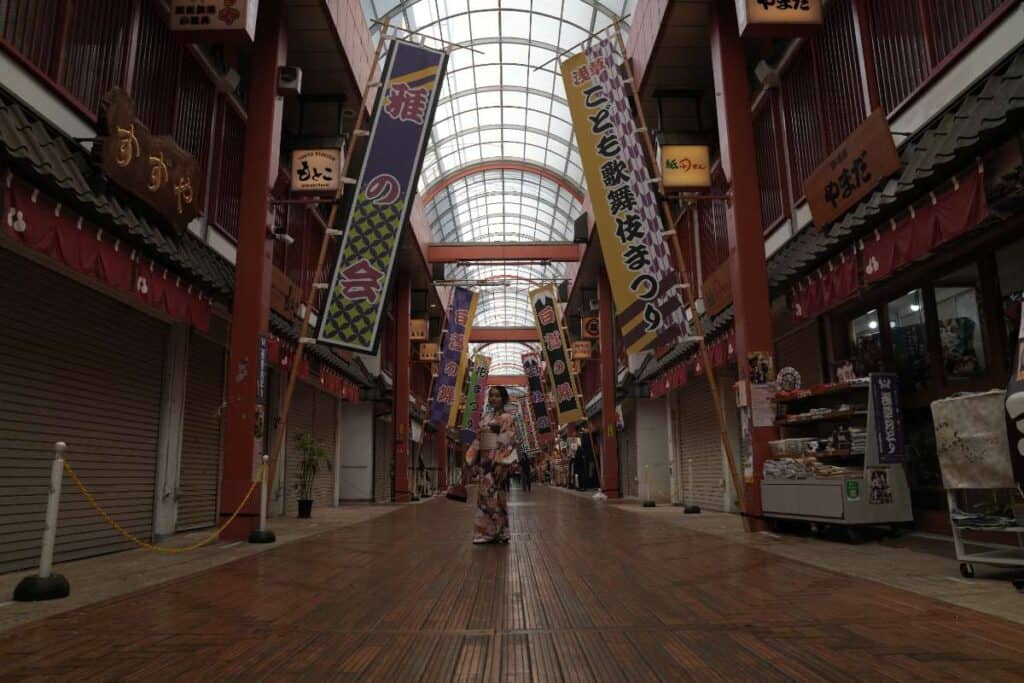
Asakusa captures the essence of Tokyo’s layered identity, merging past and present. From the tranquil spaces of Sensō-ji Temple to the bustling energy of Nakamise Street and the retro charm of Hoppy Street, Asakusa is both a reflection of Tokyo’s history and a window into its present. This neighborhood offers a truly immersive experience and is essential for anyone who wants to understand Tokyo. Be sure to include Asakusa in your itinerary—it’s a place where Tokyo’s spirit is palpable and alive.



